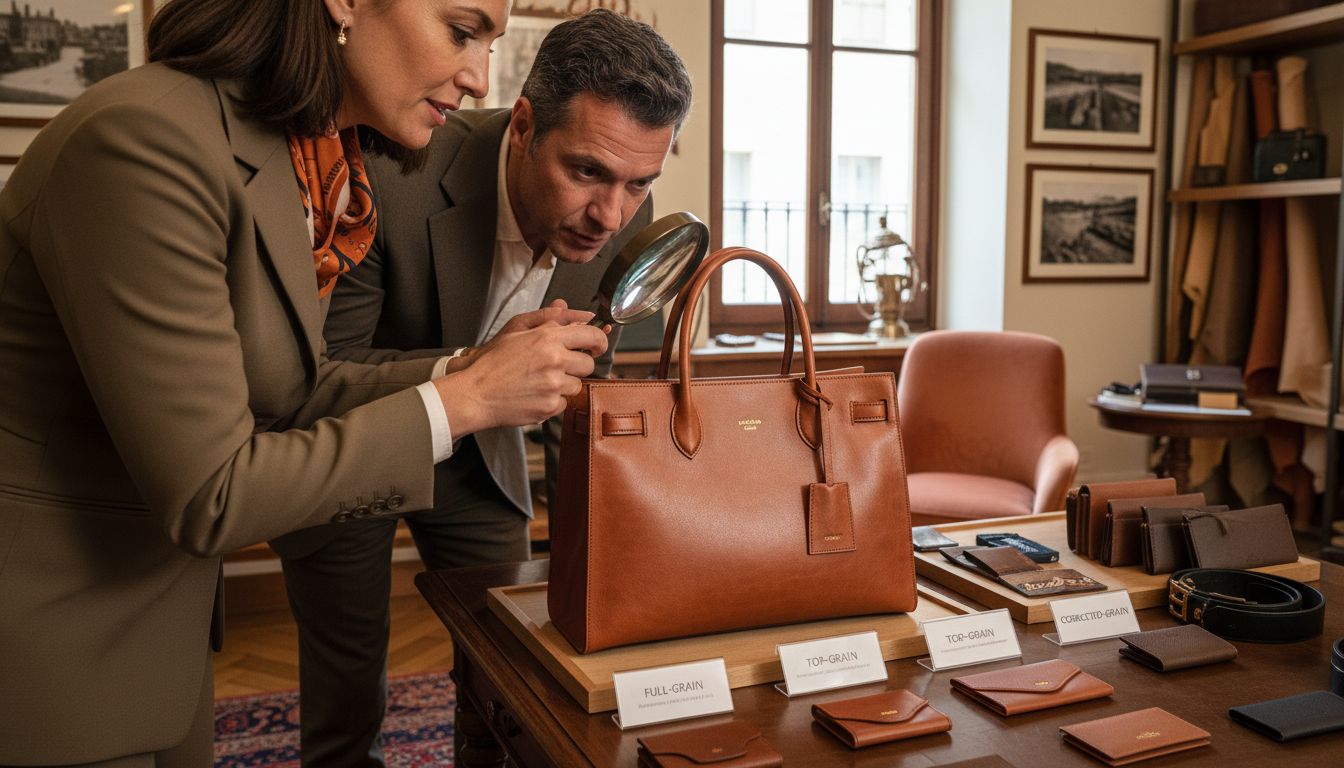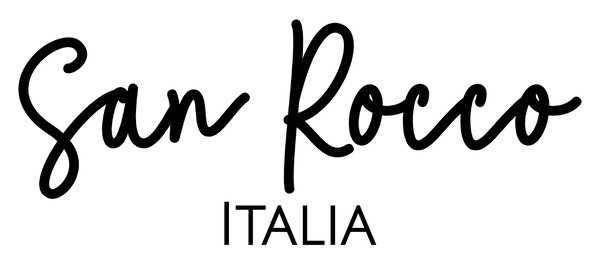
Leather From Italy: The Essential Guide
Share
Most luxury lovers in Britain recognise that true Italian leather stands for more than style alone. With a heritage stretching back to medieval Tuscany, this material blends artistry with unrivalled durability. Over 80 percent of discerning buyers say the unique patina and lasting quality of Italian leather set it apart from ordinary options. If you value craftsmanship and want to uncover what truly defines authentic Italian leather, this guide reveals the timeless secrets behind its global reputation.
Table of Contents
- Defining Italian Leather And Its Heritage
- Key Types Of Italian Leather Explained
- Traditional Craftsmanship And Artisanal Techniques
- Recognising Genuine Quality And Authenticity
- Ethics, Sustainability, And Italian Leather Regulation
- Caring For Italian Leather Goods
Key Takeaways
| Point | Details |
|---|---|
| Heritage of Craftsmanship | Italian leather embodies centuries of artisanal tradition, emphasising the transformation of raw hide into high-quality, durable products. |
| Types of Leather | Full-grain leather is the highest quality, known for its unique grain and ability to age beautifully, alongside other types like top-grain and corrected-grain leather. |
| Authenticity Indicators | Genuine Italian leather features natural imperfections, robust suppleness, and meticulous craftsmanship that distinguish it from inferior imitations. |
| Sustainability Practices | The Italian leather industry prioritises ethical manufacturing, employing eco-conscious practices and strict regulations to ensure sustainability and cultural preservation. |
Defining Italian Leather and Its Heritage
Italian leather represents the pinnacle of craftsmanship, embodying centuries of artisanal tradition passed through generations of skilled makers. When we speak of Italian leather, we are referencing not merely a material, but a profound cultural legacy that transforms raw hide into extraordinary artefacts of extraordinary quality and beauty.
The heritage of Italian leather traces back to medieval Tuscany, where tanners and leatherworkers in cities like Florence and Santa Croce sull’Arno developed revolutionary techniques that would set global standards. These artisans understood that exceptional leather requires meticulous attention at every stage – from selecting premium animal hides to employing sophisticated tanning processes that enhance natural grain, texture, and durability. In this region, leathermaking transcended simple manufacturing, becoming an art form celebrated worldwide.
What distinguishes Italian leather is its unwavering commitment to full-grain quality. Unlike mass-produced leather that strips away the hide’s natural surface, Italian craftspeople preserve the entire grain, allowing each piece to retain its unique markings and inherent strength. This approach means that an Italian leather item isn’t just a product, but a living narrative – each handbag, wallet, or jacket carrying the subtle imperfections that tell a story of authentic craftsmanship. For those seeking deeper insights into this remarkable tradition, our guide on Italian leather craftsmanship offers a comprehensive exploration of these time-honoured techniques.
Key characteristics that define Italian leather include its exceptional softness, remarkable durability, and ability to age gracefully. The leather develops a rich patina over time, becoming more beautiful with each passing year – a testament to the superior tanning methods and extraordinary skill of Italian artisans. From the rolling hills of Tuscany to the workshops of Milan, this tradition continues to represent the gold standard in global leather production, representing not just a manufacturing process, but a profound cultural expression of beauty, quality, and timeless elegance.
Key Types of Italian Leather Explained
Full-grain leather remains the most prestigious and sought-after type of Italian leather, representing the pinnacle of quality and authenticity. By preserving the entire hide’s natural surface, this leather maintains its inherent strength, unique grain patterns, and remarkable ability to develop a rich, nuanced patina over time. According to jihua3515, Italian leather’s excellence is rooted in advanced tanning techniques that transform high-quality hides into supple, richly coloured materials perfect for luxury fashion accessories.
Beyond full-grain, Italian leather artisans craft several distinctive varieties, each with unique characteristics. Top-grain leather represents the second-highest quality, where the outermost layer is slightly sanded to remove imperfections while maintaining significant structural integrity. Corrected-grain leather undergoes more extensive surface treatment, providing a more uniform appearance but sacrificing some of the natural character prized in premium leatherwork. For those seeking deeper understanding of these nuanced distinctions, our guide comparing Italian leather types offers comprehensive insights.
The tanning process dramatically influences leather quality, with vegetable tanning emerging as the most traditional and environmentally responsible method. Vegetable-tanned leather utilises natural tannins extracted from tree bark, creating a material that is not only environmentally friendly but also develops a stunning, personalised character over time. This method, predominantly practised in Tuscan tanneries, produces leather with exceptional colour depth, breathability, and a unique ability to age beautifully. Each piece tells a story – reflecting the skilled hands that transformed raw hide into an exquisite material that grows more beautiful with every use.

Ultimately, understanding Italian leather means appreciating the intricate balance between scientific precision and artistic tradition. Whether used in haute couture handbags, bespoke shoes, or refined accessories, these leathers represent more than mere materials – they are living testaments to Italy’s unparalleled craftsmanship, embodying generations of technical expertise and aesthetic refinement.
Traditional Craftsmanship and Artisanal Techniques
Traditional Italian leatherworking is a complex art form that transcends mere manufacturing, representing a profound cultural heritage passed through generations of master craftspeople. Each piece of leather tells a narrative of skill, precision, and deep respect for materials that have been carefully cultivated over centuries. Maitri Global Education highlights the critical role of institutions like Scuola del Cuoio, established in 1950 in Florence, which continues to preserve and transmit these intricate techniques through hands-on training programs guided by experienced artisans.
The artisanal process begins with meticulous hide selection, where craftspeople examine each skin for quality, texture, and potential. Skilled artisans employ time-honoured techniques that involve carefully cutting, treating, and shaping leather using specialised tools that have remained largely unchanged for generations. These techniques require an extraordinary level of manual dexterity, with some processes demanding decades of practice to master. Our guide on understanding Italian leather production offers deeper insights into these remarkable methodologies.
Crucial to this craftsmanship is the relationship between artisan and material. Each leather piece is treated as a unique canvas, with imperfections celebrated rather than concealed. Techniques like vegetable tanning, precision cutting, and hand-finishing transform raw hides into objects of extraordinary beauty. Artisans work with an intuitive understanding of leather’s inherent qualities – its grain, elasticity, and potential for transformation – creating pieces that are not merely functional but are true works of art.
Beyond technical skill, Italian leather craftsmanship embodies a philosophical approach to creation. It represents a commitment to quality over quantity, to preserving traditional methods in an age of mass production. Each stitch, each carefully burnished edge, reflects a deep cultural reverence for craftsmanship that has made Italian leather synonymous with luxury, quality, and timeless elegance worldwide.
Recognising Genuine Quality and Authenticity
Authenticating Italian leather requires a sophisticated understanding of multiple sensory and technical indicators that distinguish genuine, high-quality craftsmanship from inferior imitations. Discerning buyers must develop a keen eye for subtle details that reveal the leather’s true provenance and exceptional quality. These hallmarks include examining the hide’s natural grain, understanding the nuanced variations in texture, and recognising the distinctive characteristics of genuine Italian leather processing.
Key indicators of authentic Italian leather begin with its physical properties. Full-grain leather should display natural imperfections, a rich and varied texture, and an ability to develop a distinctive patina over time. Genuine pieces will demonstrate remarkable suppleness, with leather that feels substantial yet flexible when handled. Colour variations should appear organic and subtle, reflecting the natural variations inherent in premium hide selection. For those seeking comprehensive guidance, our expert guide on identifying authentic Italian leather provides in-depth insights into these critical evaluation techniques.
Technical authentication involves examining multiple sensory and structural elements. Authentic Italian leather carries a distinctive, subtle aroma – neither overly chemical nor excessively processed. The edges should be meticulously finished, with clean, precise cuts that demonstrate expert craftsmanship. Stitching must be uniform and robust, with no loose threads or uneven spacing. Experienced artisans leave almost imperceptible signatures of their work: tiny, consistent details that machine production cannot replicate. The leather should feel warm to the touch, with a natural resilience that speaks to its premium origin.
Ultimately, recognising genuine Italian leather is an art form that combines technical knowledge with an intuitive appreciation for craftsmanship. Buyers must look beyond surface appearances, understanding that true quality lies in the material’s heritage, the skill of its creators, and its potential to age beautifully. Authenticity is not merely about perfection, but about celebrating the unique character of each piece – a living testament to Italy’s unparalleled leather-making tradition.
Ethics, Sustainability, and Italian Leather Regulation
The Italian leather industry stands at the forefront of ethical manufacturing, developing comprehensive frameworks that prioritise environmental stewardship, worker welfare, and cultural preservation. UNIC - Italian Tanneries exemplifies this commitment through innovative initiatives that extend beyond mere production, including supporting cultural heritage restoration projects and engaging educational programmes that highlight the industry’s profound social responsibility.
Sustainability in Italian leather production encompasses multiple critical dimensions. Manufacturers increasingly adopt eco-conscious practices such as water recycling, minimising chemical usage, and implementing circular economy principles. These approaches dramatically reduce environmental impact while maintaining the exceptional quality synonymous with Italian leather craftsmanship. For those seeking deeper understanding of these transformative practices, our guide to Italian leather certification provides comprehensive insights into regulatory standards and ethical manufacturing protocols.
Regulatory frameworks governing Italian leather production are stringent, with multiple layers of oversight ensuring ethical standards. These regulations cover everything from raw material sourcing to worker protection, environmental compliance, and animal welfare considerations. Certification processes are rigorous, requiring manufacturers to demonstrate transparent supply chains, minimal environmental footprint, and adherence to strict quality benchmarks. Each certified piece represents not just a product, but a commitment to sustainable, responsible manufacturing that respects both human and environmental ecosystems.

Ultimately, the ethics of Italian leather transcend mere compliance – they represent a profound cultural philosophy of respect, craftsmanship, and responsible production. By prioritising long-term sustainability over short-term gains, the industry continues to set global standards for ethical manufacturing, proving that luxury and environmental consciousness can coexist harmoniously.
Caring for Italian Leather Goods
Italian leather requires a nuanced approach to maintenance, blending gentle techniques with profound respect for the material’s inherent qualities. Proper care extends beyond simple cleaning, representing a commitment to preserving the leather’s natural beauty, structural integrity, and unique character. Each piece demands thoughtful, personalised attention that recognises its artisanal heritage and potential to age beautifully.
Maintenance begins with understanding leather’s fundamental nature. Protective conditioning is crucial, involving periodic application of specialised leather balms that nourish and protect the material’s surface. Avoid harsh chemical cleaners that can strip away natural oils, instead opting for soft, lint-free cloths and minimal intervention. For those seeking comprehensive guidance on maintaining their precious leather pieces, our guide to cleaning leather purses naturally offers expert insights into delicate preservation techniques.
Storage plays a critical role in leather preservation. Items should be kept in cool, dry environments away from direct sunlight, with adequate breathing space to prevent moisture accumulation. Use soft, breathable dust bags for handbags, and stuff structured pieces with acid-free tissue to maintain their shape. Leather should never be compressed or stored in plastic, which can cause irreversible damage. Professional leather enthusiasts recommend rotating usage between multiple pieces to minimise continuous wear and allow each item periodic rest.
Ultimately, caring for Italian leather is an intimate dialogue between owner and object. Each scratch tells a story, each patina reflects personal history. By treating these pieces with respect, understanding, and minimal intervention, owners transform leather goods from mere accessories into living, evolving companions that grow more beautiful and meaningful with each passing year.
Discover Timeless Luxury with Authentic Italian Leather
Navigating the world of Italian leather means understanding the delicate balance between tradition, quality, and sustainability. If you value full-grain leather, expert craftsmanship, and ethical production that guarantees your piece will age beautifully, then you deserve more than just any leather accessory. At San Rocco Italia, each handbag and leather good proudly reflects centuries of artisanal heritage, employing the same traditional methods highlighted in the essential guide. Our commitment to authenticity ensures you experience the softness, durability, and unique patina that genuine Italian leather delivers.

Elevate your collection today by exploring our curated range of luxury handbags and accessories. Let your purchase be a celebration of artisanship and sustainability combined with timeless design. Don’t miss your chance to own a piece of Italy’s storied leather legacy now. Visit San Rocco Italia to embrace true craftsmanship and discover detailed insights in our Italian leather craftsmanship guide and authentic Italian leather identification tips. Your journey to owning beautifully crafted Italian leather begins here.
Frequently Asked Questions
What is Italian leather and what sets it apart from other types of leather?
Italian leather is known for its exceptional quality, craftsmanship, and historical significance. Unlike mass-produced leather, it retains the full grain of the hide, allowing for unique markings and strength. Its softness, durability, and ability to develop a rich patina over time distinguish it from other leather types.
What are the main types of Italian leather?
The main types of Italian leather include full-grain leather, which is the highest quality, and top-grain leather, which is slightly sanded to remove imperfections. Corrected-grain leather is also available, but it has undergone more surface treatment and lacks some natural character.
How should I care for my Italian leather products?
Caring for Italian leather involves using specialised balms for conditioning, avoiding harsh chemicals, and storing items in a cool, dry place. Regular maintenance, such as gentle cleaning with lint-free cloths and ensuring adequate space for items, helps preserve the leather’s beauty and integrity.
How can I identify authentic Italian leather?
Authentic Italian leather displays natural imperfections, a rich texture, and an ability to develop a unique patina over time. Key indicators include a distinctive aroma, meticulously finished edges, and uniform stitching. Genuine pieces will feel warm and supple, reflecting high-quality craftsmanship.


